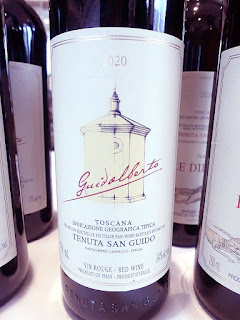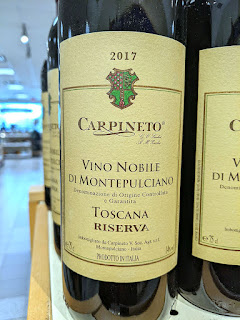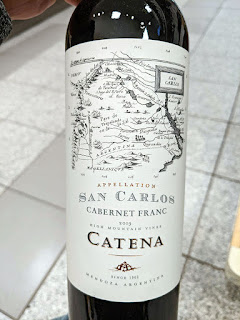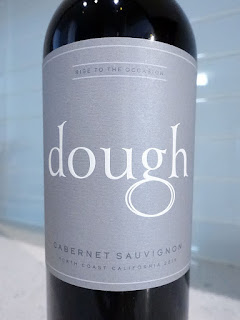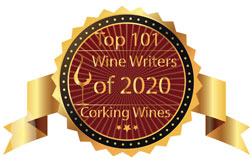After enjoying the delicious 2018 Zingari last year, red wine review is the latest edition of this lovely Super Tuscan that arrived at the LCBO last weekend as part of the LCBO VINTAGES Release.
It is produced by Petra, a winery and estate whose modern story was conceived in the late 1990's with the intention of bringing together some of the greatest pioneers of Italian wine to create a new benchmark for Super Tuscans - wines made using international grape varieties grown and vinified on Tuscan soils. Petra is situated close to the ancient village of Suvereto, in northern Maremma of Tuscany, on the ferrous hills of the Val di Cornia where you can see as far as the Tyrrhenian Sea.
Although Petra was only conceived fairly recently, it's roots go back to 1808 when Elisa Bonaparte Baciocchi, Napoleone's sister, Princess of Lucca and Piombino and grand duchess of Tuscany, chose this place in Maremma to establish the first seed of an agricultural and viticultural project. Nearly two centuries later, Francesca Moretti fell in love with the history and the culture of the chateaux in Bordeaux and began studying agriculture and oenology. She eventually settled in the fertile Val di Cornia and in 1997, her father Vittorio Moretti, one of the greats of Italian wine, purchased 60 hectares in San Lorenzo and 45 hectares in Campiglia Marittima, a few kilometres from Piombino, in the Suvereto area, as the start of the contemporary project that would become Petra.
While still in university, Francesca planted her first varietals at the winery based on the terroir and her vision and favouring international varieties in the Princess Vineyard, a 5 hectare plot where Elisa Bonaparte had also planted Cabernet Sauvignon and Merlot grapes two centuries earlier. The vineyards of Petra are located in a pristine, "wild" part of Maremma along the Tuscan coast where biodiversity is vibrant. The vineyards are managed according to organic practices while in the process of being certified, as well as reducing environmental impact.
The Zingari wine was born as an experimental vineyard on loamy-sandy textured and slightly calcareous soils to test the attitude of its varietals: Syrah, Merlot, Sangiovese, and Petit Verdot. The wine traces its roots to an ancient water spring that was a stop-over for pilgrims and wayfarers who were travelling along the Aurelia Street, hence the name Zingari (aka Gypsies), and could seek refreshment by resting near by its crystal clear waters. The decision to plant not only autochthonous grape varieties, but also international varieties, was to underline and narrate the migrating nature of the wine. The grape varieties used in this wine travelled distances to finally find comfort within the water spring of Zingari! It was aged in barrels and barriques for at least 12 months, and then at least a further 3 months in bottle prior to release.
By most accounts, the 2019 growing season in Tuscany was extremely good, marked by extreme summer heat and life-saving rains which fell towards the end of July that prevented the onslaught of drought. The weather stayed fine and stable through to harvest period, raising expectations for producing some excellent wines. Let's see how this 2019 Super Tuscan is tasting tonight...
This Super Tuscan is a blend of Syrah, Merlot, Sangiovese, and Petit Verdot has clean, fragrant, medium-high intensity aromatics that deliver spicy, dried herbs, dark-black cherry, cocoa, clove, earthy mineral, and balsamic notes with impressive complexity. On the dry, chewy, medium+ to medium-full bodied palate it has ripe dark berry cherry, cassis, black plum, mineral, and dried herbs flavours with a saltiness that permeates throughout. Acids are fresh and succulent, while the supple tannins have a lightly pleasant chalky grip. Salty minerals, dark berry, cherry, sweet cassis, and cedary oak notes linger on the finish, with very good length. Better than the previous vintage and a highly recommended buy! Score: 89 pts
Other delicious Petra Wines can be ordered through their Agent - Noble Estates Wines & Spirits.
It is produced by Petra, a winery and estate whose modern story was conceived in the late 1990's with the intention of bringing together some of the greatest pioneers of Italian wine to create a new benchmark for Super Tuscans - wines made using international grape varieties grown and vinified on Tuscan soils. Petra is situated close to the ancient village of Suvereto, in northern Maremma of Tuscany, on the ferrous hills of the Val di Cornia where you can see as far as the Tyrrhenian Sea.
Although Petra was only conceived fairly recently, it's roots go back to 1808 when Elisa Bonaparte Baciocchi, Napoleone's sister, Princess of Lucca and Piombino and grand duchess of Tuscany, chose this place in Maremma to establish the first seed of an agricultural and viticultural project. Nearly two centuries later, Francesca Moretti fell in love with the history and the culture of the chateaux in Bordeaux and began studying agriculture and oenology. She eventually settled in the fertile Val di Cornia and in 1997, her father Vittorio Moretti, one of the greats of Italian wine, purchased 60 hectares in San Lorenzo and 45 hectares in Campiglia Marittima, a few kilometres from Piombino, in the Suvereto area, as the start of the contemporary project that would become Petra.
While still in university, Francesca planted her first varietals at the winery based on the terroir and her vision and favouring international varieties in the Princess Vineyard, a 5 hectare plot where Elisa Bonaparte had also planted Cabernet Sauvignon and Merlot grapes two centuries earlier. The vineyards of Petra are located in a pristine, "wild" part of Maremma along the Tuscan coast where biodiversity is vibrant. The vineyards are managed according to organic practices while in the process of being certified, as well as reducing environmental impact.
The Zingari wine was born as an experimental vineyard on loamy-sandy textured and slightly calcareous soils to test the attitude of its varietals: Syrah, Merlot, Sangiovese, and Petit Verdot. The wine traces its roots to an ancient water spring that was a stop-over for pilgrims and wayfarers who were travelling along the Aurelia Street, hence the name Zingari (aka Gypsies), and could seek refreshment by resting near by its crystal clear waters. The decision to plant not only autochthonous grape varieties, but also international varieties, was to underline and narrate the migrating nature of the wine. The grape varieties used in this wine travelled distances to finally find comfort within the water spring of Zingari! It was aged in barrels and barriques for at least 12 months, and then at least a further 3 months in bottle prior to release.
By most accounts, the 2019 growing season in Tuscany was extremely good, marked by extreme summer heat and life-saving rains which fell towards the end of July that prevented the onslaught of drought. The weather stayed fine and stable through to harvest period, raising expectations for producing some excellent wines. Let's see how this 2019 Super Tuscan is tasting tonight...
Tasting Note:
ZINGARI 2019 - IGT Toscana, Italy (#244228) (XD) - $19.95This Super Tuscan is a blend of Syrah, Merlot, Sangiovese, and Petit Verdot has clean, fragrant, medium-high intensity aromatics that deliver spicy, dried herbs, dark-black cherry, cocoa, clove, earthy mineral, and balsamic notes with impressive complexity. On the dry, chewy, medium+ to medium-full bodied palate it has ripe dark berry cherry, cassis, black plum, mineral, and dried herbs flavours with a saltiness that permeates throughout. Acids are fresh and succulent, while the supple tannins have a lightly pleasant chalky grip. Salty minerals, dark berry, cherry, sweet cassis, and cedary oak notes linger on the finish, with very good length. Better than the previous vintage and a highly recommended buy! Score: 89 pts
Other delicious Petra Wines can be ordered through their Agent - Noble Estates Wines & Spirits.










